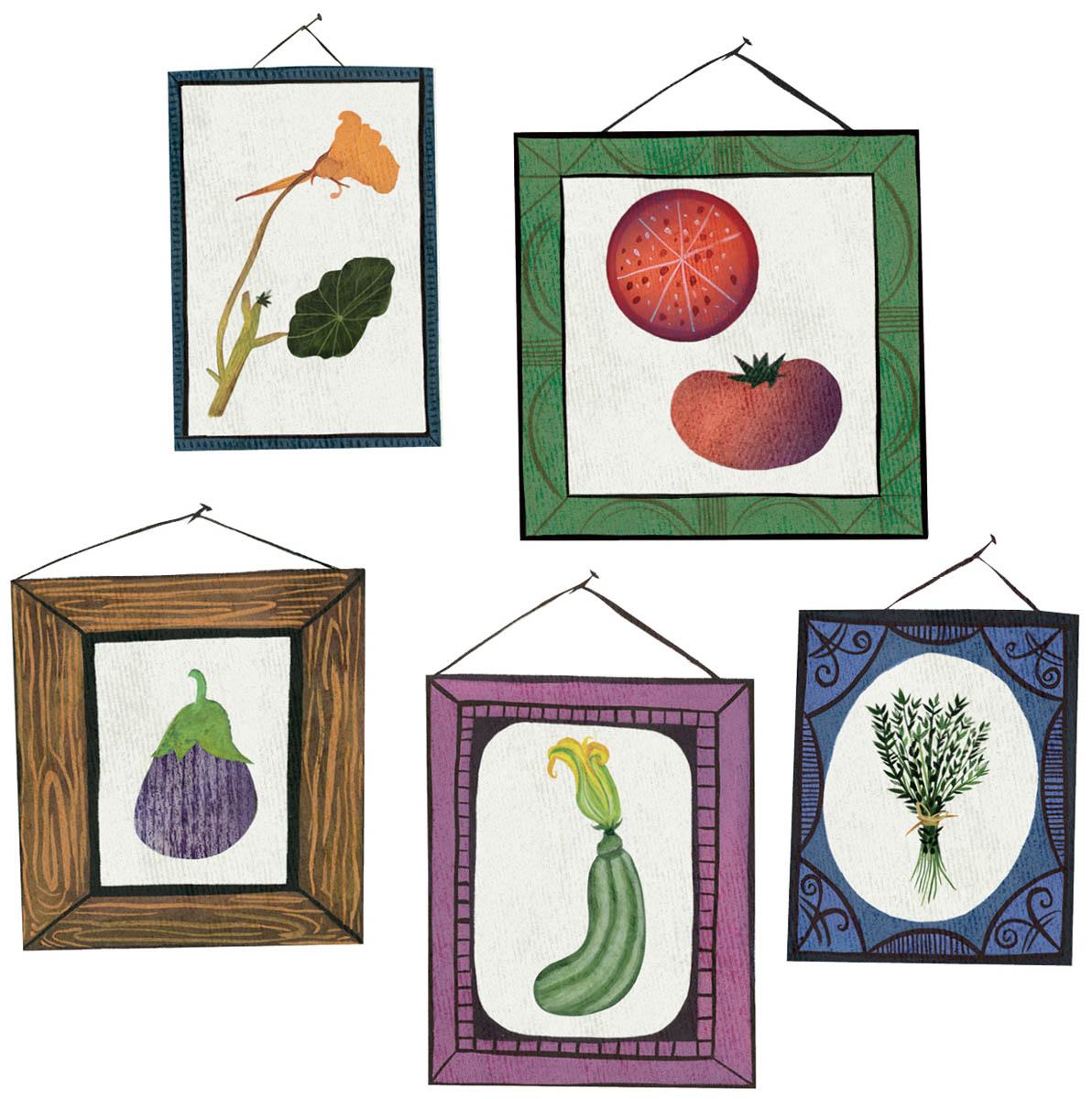
What’s old is new again as gardeners discover the joy of growing heirloom vegetables such as ‘Cherokee Purple’ tomatoes and ‘Lolla Rossa’ lettuce. Marie Iannotti celebrates the diversity and flavor of heirloom edibles in her plan, which includes six main planting beds to showcase her top heirloom picks.
Marie Iannotti is passionate about heirloom vegetables (open-pollinated plants that are 50 years or older, the seeds of which can be collected and saved and grow true to type). Initially she was drawn to them for their outstanding flavor. “I was in search of a better-tasting tomato and stumbled upon heirlooms just as they were gaining popularity,” she recalls. “I tried growing a few surprisingly wonderful tomatoes, peppers, and beans, and just kept going.”

The importance of heirloom crops. Unfortunately, thousands of heritage varieties have been lost over time, but thanks to the diligence of avid seed savers and heritage seed companies around the world, many have been preserved and are once again available to gardeners. “We need to keep the enormous variety and genetic diversity of vegetables available, because one size does not fit every garden,” says Marie. When sourcing seed, you’ll discover that certain heirloom varieties, like ‘Brandywine’ tomatoes, are widely available, while others, like those on Slow Food’s Ark of Taste, may take you on a bit of a wild-goose chase. Marie also notes that when gardeners save the seeds from their best-producing, healthiest heirloom varieties from year to year, the future generations of those plants will be better adapted to the climatic conditions of their specific areas.
Marie’s heirloom sampler garden is a tidy 20 by 25 feet with six manageable beds ranging in size from 9 by 4 feet to 9 by 3 feet. Marie favors raised beds, yet with the hot dry summers that seem to be an increasing trend, she is also intrigued by the thought of sunken beds, which are plots that are dug so that they are below soil level. “You’re still working with a designated bed, but water drains into the bed, which is a nice feature during dry summers,” she says.
Top heirlooms. Her favorite heirlooms include ‘Cherokee Purple’ tomatoes (she is partial to their musky, smoky flavor), ‘Romanesco’ broccoli (“It’s slightly sweet, nutty, and tender — if you can stop looking at it long enough to take a bite!”), and ‘Charentais’ melons (“perfumed, tropical, and sweet, they are worth the hassle of growing them in my less-than-ideal climate”).
Making the most of your space. Marie decides where to put each crop based on its space demands. “I place the larger, space-hogging plants first and then allocate space for the perpetually harvested vegetables like the chard and greens,” she says, adding that she tucks in herbs wherever there is a vacant spot. “I usually keep one bed dedicated to succession planting so I don’t have to go searching for spare space.”
Heirlooms taste great. Whatever heirloom vegetables you choose to grow, remember that “variety is the spice of life.” Marie encourages you to experiment with all sorts of heirloom vegetables. In her book The Beginner’s Guide to Growing Heirloom Vegetables, she notes that heirloom crops are not dusty antiques, but rather prized champions grown and hand-selected for quality, flavor, and production. “Their true splendor comes from being too scrumptious to forget,” she says.

1. Eggplants: ‘Louisiana Long Green’ and ‘Rosa Bianca’ (2 plants each)
2. Bush Beans: ‘Fin de Bagnol’ French (filet)
3. Zucchini: ‘Costata Romanesco’ on a teepee
4. Nasturtiums: ‘Double Dwarf Jewel Mix’
5. Tomatoes: ‘Cherokee Purple’, ‘Italian Heirloom’, ‘German Pink’, and ‘Yellow Pear’
6. Basil: ‘Lettuce Leaf’ (‘Italian Large Leaved’) or ‘Genovese’
7. Lettuce: ‘Lolla Rossa’, ‘Four Seasons’ (‘Merveille des Quatre Saisons’), and ‘Amish Deer Tongue’
8. Pole beans: ‘Lazy Housewife’ on a teepee
9. Swiss chard: ‘Bright Lights’
10. Kale: ‘Lacinato’ (dinosaur or ‘Nero di Toscana’)
11. Parsley: Flat-leaved (Italian)
12. Radishes and carrots: ‘French Breakfast’ radishes and ‘Paris Market’ carrots
13. Beet greens and scallions: ‘Bull’s Blood’ beet greens and ‘Evergreen Hardy White’ scallions
14. Beets and spinach: ‘Detroit Dark Red’ or ‘Chioggia’ beets and ‘Bloomsdale Long Standing’ spinach
15. ‘Apollo’ arugula and thyme
16. Sweet peppers: ‘Marconi’
17. Garlic: ‘Music’ (Zones 4–7) or ‘Inchelium Red’ (Zones 8–10)
18. Greek oregano
19. Onions: ‘Long Red Florence’
20. Cucumbers: ‘True Lemon’ on a teepee
21. Snow peas: ‘Golden Sweet’ on a trellis